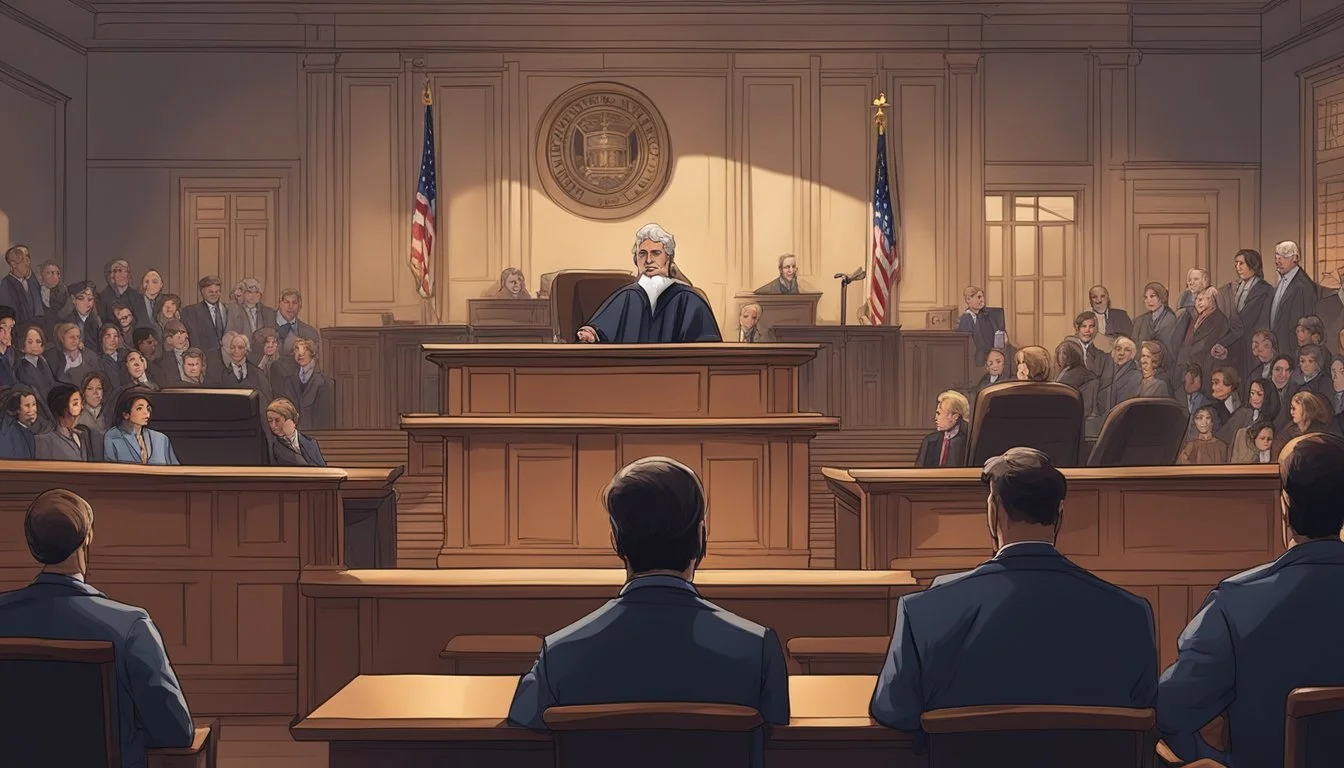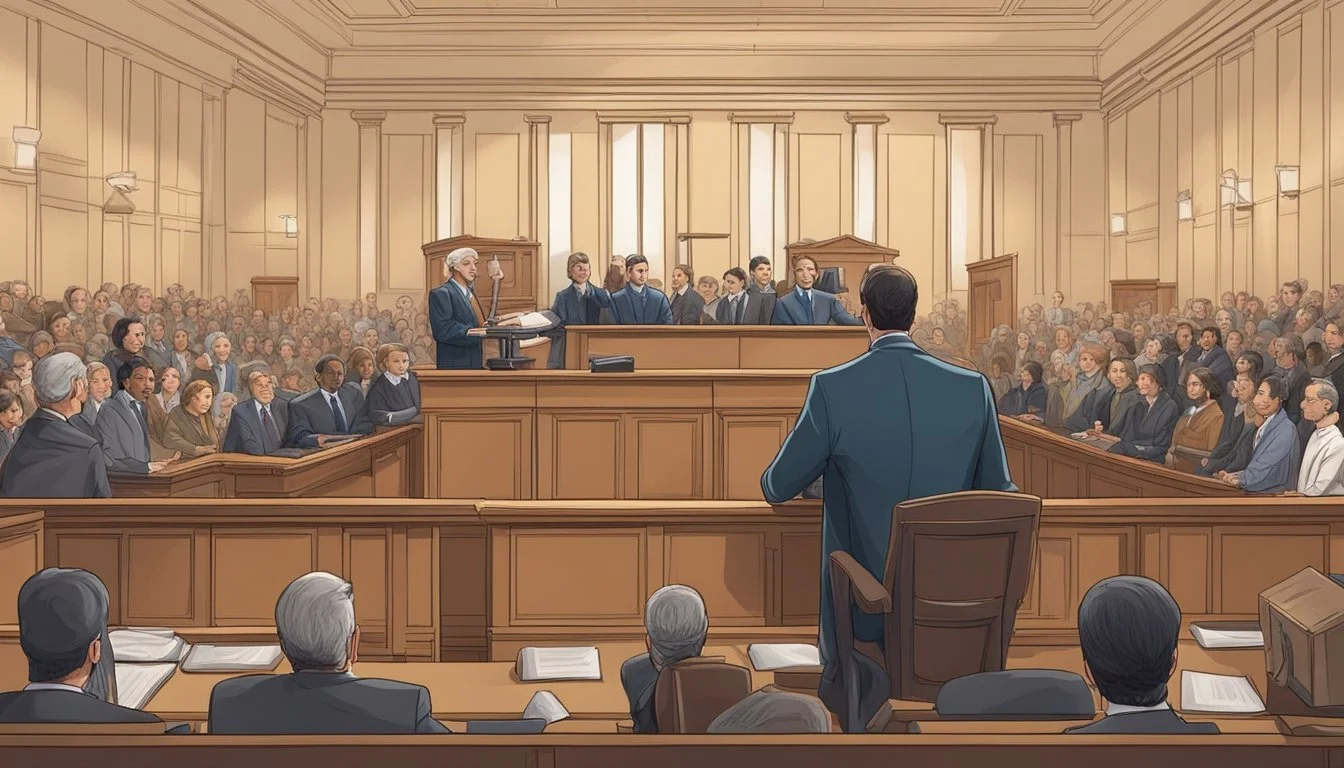Charming Killer: The Actual Crimes of 'Extremely Wicked, Shockingly Evil and Vile'
Unveiling Ted Bundy's True Atrocities
Ted Bundy's charisma and charm masked a sinister reality. The 2019 film "Extremely Wicked, Shockingly Evil and Vile" portrays this duality, showing how Bundy's seemingly normal life concealed his horrific crimes. Starring Zac Efron, the movie is based on the memoir of Elizabeth Kendall, Bundy's former girlfriend.
The film depicts Bundy's actual crimes, including rape and murder, while exploring how he maintained relationships and evaded suspicion for years. It showcases his ability to manipulate those around him, particularly Kendall, who struggled to accept the truth about her partner. The title itself comes from the judge's description of Bundy at his sentencing.
While some criticized the film for potentially glamorizing Bundy, its final scenes reveal the full extent of his depravity. The movie serves as a chilling reminder that evil can hide behind a charming facade, making Bundy's story all the more disturbing.
Profile of Ted Bundy
Ted Bundy was a notorious American serial killer who operated in the 1970s. His charm and intelligence masked a dark, violent nature that led to the murders of numerous young women.
Early Life and Background
Theodore Robert Bundy was born on November 24, 1946, in Burlington, Vermont. He grew up believing his grandparents were his parents and that his mother was his sister.
Bundy's childhood was marked by social awkwardness and a deep sense of shame about his illegitimate birth. He excelled academically but struggled to form meaningful relationships.
As a young adult, Bundy attended the University of Washington, where he studied psychology. This education would later inform his manipulative tactics.
Charm and Personality
Bundy was known for his charisma and good looks. He could be articulate, well-dressed, and seemingly trustworthy.
His ability to blend in and appear non-threatening allowed him to approach victims easily. Bundy often feigned injury or posed as an authority figure to gain trust.
Many who knew him described Bundy as likable and ambitious. This façade made it difficult for some to believe he was capable of such heinous crimes.
Analysis of Criminal Behavior
Bundy's crimes were characterized by careful planning and brutality. He typically targeted young, attractive women with long, dark hair.
His modus operandi included:
Luring victims with fake injuries or requests for help
Blitz attacks using blunt objects
Transporting victims to secondary locations
Bundy exhibited necrophilic tendencies and often revisited crime scenes to engage with his victims' bodies. This compulsive behavior eventually contributed to his capture.
Psychologists have classified Bundy as a psychopath, noting his lack of empathy and manipulative nature. His crimes spanned several states, making him one of America's most prolific serial killers.
Chronology of Crimes
Ted Bundy's murderous spree spanned several years and states, leaving a trail of victims in his wake. His crimes escalated from kidnappings to brutal murders before law enforcement finally caught up with him.
Murders and Kidnappings
Bundy's known crimes began in 1969 with attempted kidnappings in Washington state. His first confirmed murder occurred in 1971 near Seattle. Over the next four years, Bundy killed at least 30 young women across Washington, Oregon, Utah, and Colorado.
His modus operandi involved luring victims with charm or feigned injury. Bundy would then overpower them, often sexually assaulting and killing them in remote locations.
In 1974, Bundy abducted and murdered several students from Washington State University and the University of Washington. He continued his killing spree in Utah later that year.
Arrest and Escape
Police arrested Bundy in Utah in August 1975 for attempted kidnapping. While in custody, evidence linked him to murders in Colorado. He was extradited there in 1977.
Bundy escaped from custody twice in Colorado. His first escape lasted only six days. The second, in December 1977, proved more successful. He fled to Florida, where he committed his final known murders.
Trials and Convictions
Authorities captured Bundy in Florida in February 1978. He stood trial for the Chi Omega sorority murders in Miami. The court found him guilty and sentenced him to death in July 1979.
A second trial in Orlando for the murder of Kimberly Leach resulted in another death sentence in February 1980. Despite multiple appeals, Bundy's convictions stood.
Florida executed Ted Bundy by electric chair on January 24, 1989. Before his death, he confessed to 30 murders, though the actual number of victims remains unknown.
The Entertainment Perspective
"Extremely Wicked, Shockingly Evil and Vile" brought Ted Bundy's story to the screen, sparking discussions about its approach to true crime storytelling. The film's production choices, casting decisions, and directorial vision shaped its portrayal of the infamous serial killer.
From Real-Life to Screen Adaptation
The biographical crime drama drew inspiration from Elizabeth Kloepfer's memoir "The Phantom Prince: My Life with Ted Bundy." This source material provided a unique perspective on Bundy's life outside his crimes.
The film focused on Bundy's relationship with Kloepfer rather than explicitly depicting his murders. This approach aimed to explore the psychological aspects of living with a serial killer.
Michael Werwie's screenplay balanced the need for factual accuracy with dramatic storytelling. The adaptation faced challenges in portraying Bundy's charm while acknowledging his heinous acts.
Casting Choices and Performances
Zac Efron's portrayal of Ted Bundy generated significant attention. His casting as the charismatic killer was a departure from his previous roles.
Efron's performance aimed to capture Bundy's magnetic personality and manipulative nature. The actor's good looks and charm mirrored Bundy's ability to deceive those around him.
Lily Collins took on the role of Elizabeth Kloepfer, Bundy's long-term girlfriend. Her performance highlighted the conflicting emotions of a woman in love with a man she suspects of terrible crimes.
Filmmaking and Direction
Director Joe Berlinger brought his experience in true crime documentaries to the project. His approach emphasized the psychological thriller aspects of the story.
Berlinger chose to avoid graphic depictions of violence, focusing instead on the emotional impact of Bundy's actions. This decision set the film apart from many other true crime adaptations.
The film's visual style and pacing aimed to create tension and unease, reflecting the uncertainty surrounding Bundy's guilt throughout much of the story. Berlinger's direction sought to maintain audience engagement without resorting to sensationalism.
Impact and Reception
"Extremely Wicked, Shockingly Evil and Vile" sparked significant debate and attracted widespread attention upon its release. The film's portrayal of Ted Bundy and its approach to the serial killer genre generated diverse reactions from critics and audiences alike.
Critical Analysis and Reviews
Critics offered mixed opinions on the film's execution. Many praised Zac Efron's performance as Ted Bundy, noting his ability to capture the killer's charisma and manipulative nature. The decision to focus on Bundy's relationship with Elizabeth Kendall received both commendation and criticism.
Some reviewers felt the film provided a fresh perspective on a well-known story. Others argued it risked glorifying Bundy's crimes. The movie's premiere at the Sundance Film Festival garnered attention, with discussions centering on its narrative choices and ethical implications.
Cultural Implications and Discussions
"Extremely Wicked" reignited public interest in Ted Bundy's case. The film prompted conversations about the media's role in sensationalizing serial killers. It raised questions about society's fascination with true crime and the potential consequences of humanizing notorious criminals.
The movie's release coincided with a surge in true crime content across various platforms. This timing sparked debates about responsible storytelling and the ethics of portraying real-life tragedies for entertainment.
Audience Reception and Popularity
The Netflix movie attracted a large viewership, benefiting from the platform's wide reach. Many viewers were drawn to the film's star power and the notorious subject matter. Social media buzzed with discussions about the movie's portrayal of Bundy and its historical accuracy.
Some audience members appreciated the film's focus on Bundy's deceptive charm. Others felt uncomfortable with what they perceived as a sympathetic portrayal. The movie's popularity led to increased interest in related documentaries and books about Ted Bundy's crimes.
Legal Proceedings
Ted Bundy's legal battles captivated the nation. His courtroom antics, the judge's memorable statements, and the ultimate sentencing shaped a pivotal moment in criminal justice history.
The Courtroom Experience
Bundy's trials were spectacles. He acted as his own attorney, cross-examining witnesses and presenting arguments. His charisma and legal knowledge impressed some observers.
The courtroom buzzed with tension as Bundy confronted evidence and testimony. He often appeared confident, even smiling at times.
Cameras captured every moment, bringing the proceedings into living rooms across America. This media attention fueled public fascination with the case.
Judge Edward Cowart and the Trial Broadcast
Judge Edward Cowart presided over Bundy's Florida trial. His stern demeanor and eloquent statements became infamous.
Cowart allowed cameras in the courtroom, making it one of the first televised trials. This decision increased public engagement with the legal process.
The judge's closing remarks to Bundy were particularly memorable. He commended Bundy's intelligence while condemning his actions.
Sentencing and Death Row
Bundy received multiple death sentences for his crimes. The gravity of his actions led to swift judgments.
On death row, Bundy spent years appealing his sentences. He gave interviews and corresponded with researchers, providing insights into his psychology.
His time on death row ended on January 24, 1989. Bundy was executed by electric chair at Florida State Prison.
The execution drew crowds outside the prison. Some celebrated, while others protested capital punishment.
Associations and Relationships
Ted Bundy's personal connections reveal a complex interplay between his charming facade and his hidden, violent nature. His relationships with Elizabeth Kloepfer and Carole Ann Boone showcase the duality of his character, while his public persona captivated and confused many.
Elizabeth Kloepfer and Ted's Duality
Elizabeth Kloepfer, also known as Liz, was Ted Bundy's long-term girlfriend. Their relationship began in 1969 and lasted through much of Bundy's killing spree.
Liz was unaware of Bundy's crimes for years, believing in his charismatic persona. She saw him as a loving partner and father figure to her daughter.
Despite suspicions, Liz struggled to reconcile the Ted she knew with the monster described by authorities. This internal conflict highlights Bundy's ability to compartmentalize his life.
Their relationship ended when Bundy's crimes came to light, leaving Liz devastated and questioning her judgment.
Marriage to Carole Ann Boone
Carole Ann Boone met Bundy while he was on trial in Florida. She became infatuated with him, believing in his innocence.
Bundy proposed to Boone in the courtroom during his trial, exploiting a legal loophole to marry her while incarcerated. This unconventional union showcased Bundy's manipulative nature.
Boone gave birth to Bundy's daughter in 1982, conceived during prison visits. She remained supportive until near the end of Bundy's life.
Their relationship demonstrated Bundy's continued ability to charm and manipulate, even from behind bars.
Public Perception and Presence
Bundy's public image was a stark contrast to his horrific crimes. His charismatic persona often confused those who encountered him.
In court, Bundy's articulate speech and clean-cut appearance challenged stereotypes of how a serial killer should look or act. This discrepancy fascinated the media and public.
Many women, despite knowing his crimes, were drawn to Bundy. Some even attended his trials, captivated by his charm.
Bundy's ability to maintain a "normal" facade while committing heinous acts contributed to the public's morbid fascination with him. This dichotomy between his public and private personas continues to intrigue and disturb people to this day.
Media and Literature
Ted Bundy's crimes have left an indelible mark on popular culture, inspiring numerous books, films, and television shows. His charismatic persona and brutal acts continue to captivate audiences and creators alike.
Books and Memoirs
Elizabeth Kendall's memoir "The Phantom Prince: My Life with Ted Bundy" offers a unique perspective on the killer. Published in 1981, it details her six-year relationship with Bundy. The book served as the basis for the film "Extremely Wicked, Shockingly Evil and Vile."
Ann Rule's "The Stranger Beside Me" provides another personal account. Rule, a former police officer, worked alongside Bundy at a crisis hotline. Her book combines firsthand experiences with detailed research on his crimes.
Documentaries and Interviews
Netflix's "Conversations with a Killer: The Ted Bundy Tapes" features never-before-heard audio recordings of Bundy. The four-part series, released in 2019, provides insight into his mindset and crimes.
"Ted Bundy: Falling for a Killer" on Amazon Prime focuses on the women in Bundy's life. It includes interviews with his long-time girlfriend Elizabeth Kendall and her daughter.
Influence on Crime Drama and Horror Genres
Bundy's story has significantly influenced crime dramas and horror films. His charming exterior contrasted with his brutal acts has become a common trope in fictional serial killer narratives.
TV series like "Mindhunter" reference Bundy's case in exploring the psychology of serial killers. Horror films often draw inspiration from his methods of luring victims, using charm as a weapon.
The fascination with Bundy has led to debates about the ethics of true crime entertainment. Critics argue that such portrayals risk glorifying killers, while supporters claim they offer valuable insights into criminal psychology.







